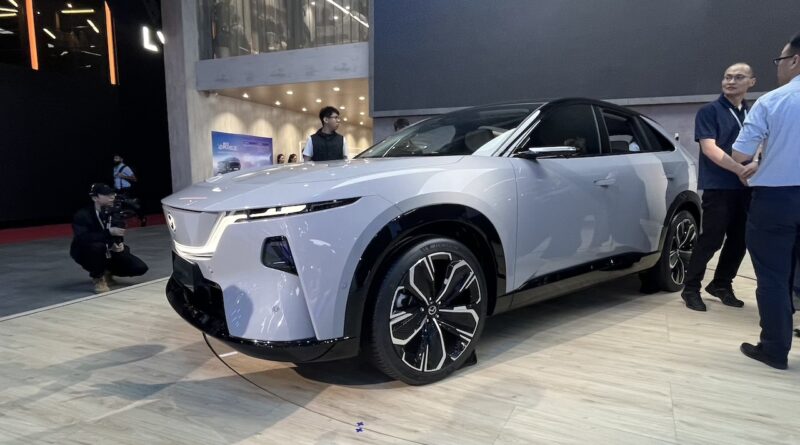
Overview
The electric Mazda EZ-60 is generating significant buzz ahead of deliveries, with a strong early signal from China that has industry watchers and potential buyers asking whether the model could translate to success Down Under. Mazda revealed two versions – a full EV and a plug-in hybrid range extender – under the EZ-60 badge, developed alongside the Deepal S07 through Mazda’s joint venture with Changan. The reaction in China has been dramatic, and the question now is whether Australians will share in that enthusiasm.
What’s driving the hype
Early demand: In less than 48 hours after its Shanghai reveal, the EZ-60 amassed 10,060 pre-orders. Potential buyers placed a nominal 10 yuan deposit (about AUD $2), with pre-orders opening for both electric and range-extender variants.
Architecture and platform: The EZ-60 rides on the Changan-sourced EPA architecture, shared with the Deepal S07. This integration is part of Mazda’s broader push to leverage collaboration for efficient EV development.
Powertrain options: The range-extender version pairs a 72kW 1.5-litre petrol generator with a 190kW electric motor and a 31.73kWh battery, delivering an EV range claimed to exceed 160km. The electric version’s specifics were still being finalized at launch, with talk of either a 68.8kWh LFP pack or an 80kWh NMC pack and a single 160kW, 330Nm motor, with a potential 190kW upgrade in some markets.
Performance and efficiency: If the higher-spec configuration comes to fruition, expect a 0-100km/h sprint around 7.9 seconds and a WLTP range near 475km for the EV variant.
Design and tech highlights
Exterior: The EZ-60 features a smoother, enclosed front grille and a larger lower air intake for aero efficiency. A distinctive rear “flying buttress” D-pillar design is aimed at reducing drag and boosting range. Production models also rely on rear-facing cameras instead of traditional mirrors and pop-out door handles to maximise aerodynamics.
Interior and infotainment: Inside, a standout 26.45-inch 5K ultra-wide screen integrates the digital instrument cluster, infotainment, and controls. Rear-seat entertainment screens are available in the second row, while Mazda positions the cabin as a tech-forward cockpit.
Sound and ambiance: The EZ-60 is touted to offer a premium audio experience, with a 23-speaker Dolby Atmos system (reported as a 71.4-channel setup in some marketing materials) designed to deliver immersive sound.
Safety and sensors: Standard features include nine airbags, Level 2 autonomous assistance, five high-definition cameras, five millimetre-wave radars, and 12 ultrasonic sensors, aligning with Mazda’s emphasis on safety in new models.
Practical specs and dimensions
Size and footprint: The EZ-60 measures 4,850mm long, 1,935mm wide and 1,620mm tall, with a wheelbase of 2,902mm. It surpasses the Tesla Model Y by about 60mm in length and 15mm in width, while being 4mm lower. The wheelbase is 22mm longer than the Model Y’s.
Cargo: Boot space is quoted at 350 litres with seats up, expanding to about 2,036 litres with rear seats folded. A separate 126-litre trunk (often described as a front storage area) is also noted in some configurations.
Safety tech: Nine airbags, Level 2 autonomy, five HD cameras, five mmWave radars, and 12 ultrasonic sensors come standard.
Australian context and timing
Market arrival: Deliveries in other major markets are lined up for August, with confirmed plans for Europe and the right-hand-drive UK market under the CX-6e moniker. Mazda Australia has not publicly confirmed plans to import the EZ-60. If a viable business case emerges, a late-2025 to late-2026 timeframe could be possible for Australia, subject to regulatory approval, local demand, and cost considerations.
Competitive landscape: In Australia, the EZ-60 would join a growing field of mid-size electric SUVs, competing with established players that have already built local support networks and charging infrastructure integration. Its success here would depend on pricing, after-sales support, and the availability of local charging and service options.
Conclusion
The Mazda EZ-60 represents a bold move by Mazda into a competitive mid-size electric SUV segment, backed by strong pre-launch interest in China and thoughtful design choices aimed at efficiency and modern appeal. While the global rollout offers promise, Australia’s adoption will hinge on Mazda Australia’s assessment of demand, pricing, and the logistics of local support. If a compelling business case materialises, the EZ-60 could become a noteworthy option for Australian buyers seeking a tech-forward, range-conscious EV with distinctive styling and sophisticated in-cabin tech.
FAQs
Will the EZ-60 come to Australia?
There is no official confirmation from Mazda Australia yet. If the business case stacks up, a late 2025 to 2026 arrival could be possible, but timing depends on local demand, pricing, and regulatory approvals.
What are the main differences between the EV and the range-extender variants?
The range-extender uses a 72kW petrol generator paired with a 190kW electric motor and a 31.73kWh battery to provide extended range when charging isn’t convenient. The full EV version relies on a larger battery pack (either around 68.8kWh LFP or 80kWh NMC, as final specs vary by market) with a single electric motor producing around 160kW (potential for 190kW in higher trims).
What range and performance can be expected for the EV version?
Early projections suggest a WLTP range near 475km and a 0-100km/h time around 7.9 seconds for the EV variant, depending on the final battery configuration and tuning for a given market.
How does the EZ-60 compare to rivals like the Tesla Model Y?
In size, the EZ-60 sits near the Model Y but is slightly longer and wider with a longer wheelbase. It emphasizes a distinctive interior screen and an advanced sound system, alongside a design language aimed at improved aerodynamics. Actual on-road performance and ownership costs will determine how it stacks up over time.
What should Australian buyers expect in terms of charging and network compatibility?
Local charging compatibility will depend on the final market specifications, including whether the EZ-60 adopts CCS2 or another standard and how Mazda Australia integrates charging partnerships and after-sales support.
About EV Evolution
EV Evolution is the leading online platform dedicated to Australian electric vehicle owners and enthusiasts. We foster a vibrant community, delivering essential EV news and insights, and enhancing user engagement through our innovative, AI-powered chatbot for dynamic discussions. Our mission is to empower Australian electric vehicle owners and enthusiasts by fostering a vibrant, AI-driven online community that connects, informs, and advances the nation’s electric vehicle landscape: Sales sensation! Electric Mazda EZ-60 is an immediate hit in China, but would it succeed in Australia?




